Explore miles of tulips and breathtaking views near Seattle
It’s spring in the Northwest and that can mean only one thing: It’s time for a visit to the see the Skagit Valley tulips. Located about an hour’s drive from Seattle and the Eastside, and under two hours from Tacoma, the Skagit Valley is an ideal day trip for all ages.
Whether you want to capture perfect Skagit Valley tulip photos or road trip beyond the fields, we’ve compiled these handy tips for planning your tiptoe through the tulips.
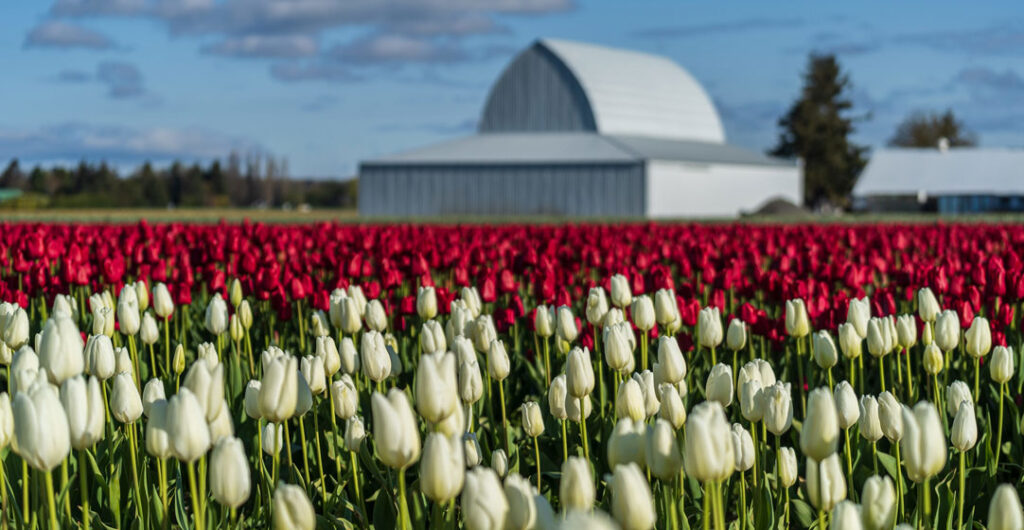
Light, weather and landscapes
If you’re hoping to take some unique Skagit Valley tulip photos, you’ve come to the right place. We’ve tapped into the expertise of AAA Washington Visual Designer Marcus Badgley, a photographer who calls the Skagit Valley home, for local recommendations.
For Badgley, capturing the Skagit Valley has become a passion. “I’m very interested in the history, geography and uniqueness of the Skagit Valley — it’s the second most productive farming county in Washington — and tulips are part of that history,” he said. “Skagit Valley tulips go hand-in-hand with the dykes and ditches, and architecture of many of the barns that Dutch and Scandinavian settlers built. There is also a constant dynamic to the weather and light in the Valley. The landscape changes from sea level to tulip fields to snowcapped mountains. Often, you can get all of that in one shot, plus Mount Baker in the background.”
Capturing awesome images takes a combination of the right weather, time of day and setting. And while you can choose your time of day to visit the Skagit Valley tulip fields, the weather is up for grabs (this is the Northwest, after all).
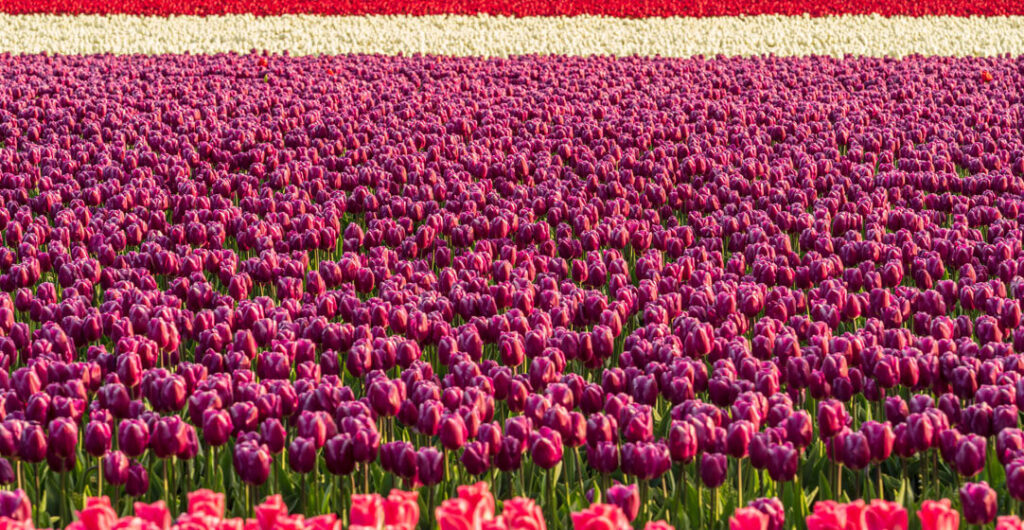
Sunny or cloudy skies?
According to Badgley, both sunny and cloudy skies have their benefits, so don’t postpone your visit due to the forecast. Cloudy days make for more lighting options, and often richer colors.
“Most people see a clear blue sky and think — great for photography,” said Badgley. “But like the great photographer Annie Lebowitz, I love cloudy days. They tend to be more interesting.”
During April, be prepared for overcast days, which smartphones can easily handle. On digital cameras, that may mean slower shutter speeds or higher ISO — the higher, the grainier the image.
“In general, as a photographer, I need to be ready for any lighting condition, but my favorite is golden hour — the sun is present but not blasting and it makes everything warm and glowy,” explains Badgley.
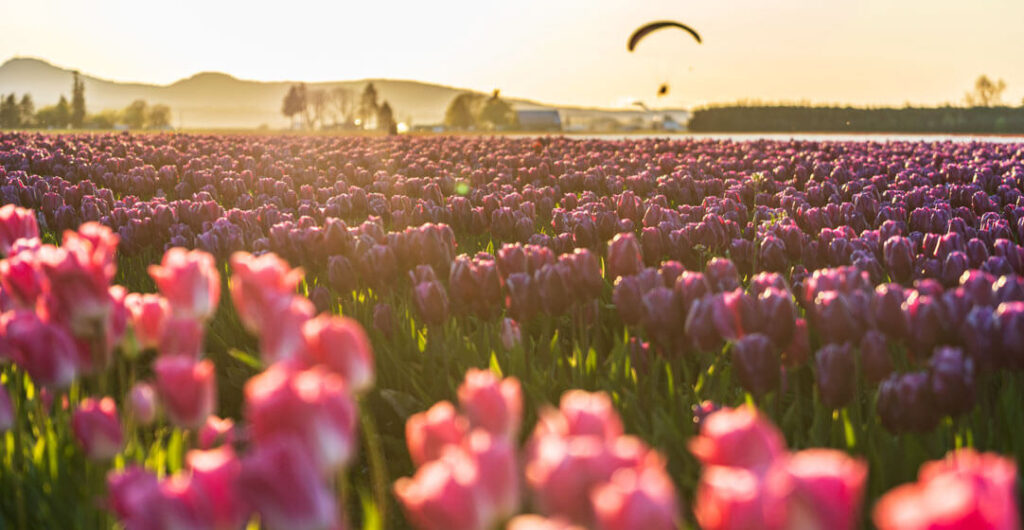
Rich backgrounds
It’s always best to be aware of the foreground and background of your photo: the tulips (foreground) and what’s behind them.
“For me, the overall focus is the field of color, the geometry of the field and the beautiful landscape of the Skagit Valley,” said Badgley. “Specifically, I want to see where the light is coming from to decide if I want to have sun flares in my shot or shoot tulips fully lit. Often, there are great old barns and buildings that can also add character to your photos.”
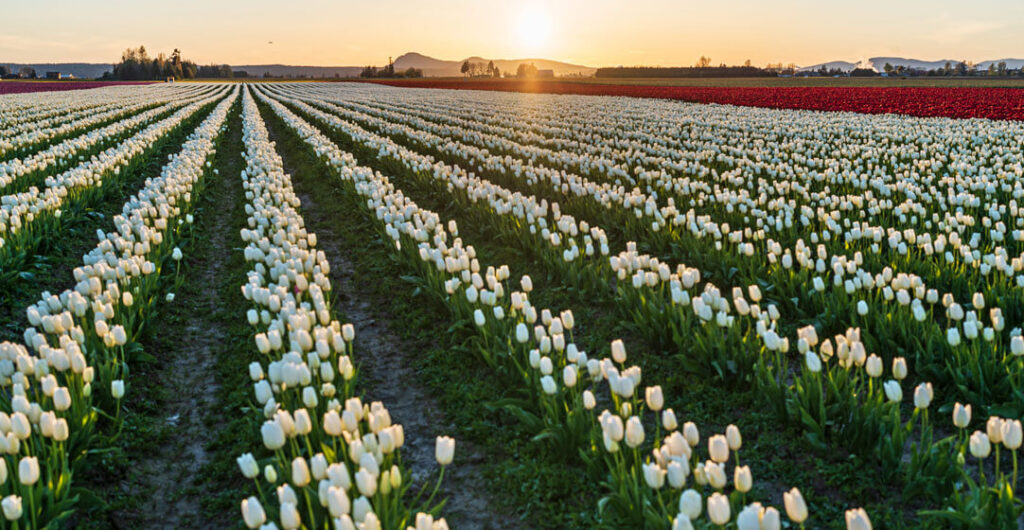
Skip the crowds
If you visit on a day when the crowds are out, it will be a challenge to snap an image without other people in the background. That’s one of the reasons that Badgley believes that the best time for Skagit Valley tulip photography is during the week. On weekends, consider visiting very early or at the end of the day to avoid the crowds.
Also, don’t forget that tulips are a fixture of many Northwest gardens and neighborhoods, where you can photograph the colorful flowers anytime. If you have a friendly neighbor who grows tulips like a pro, ask them if you can capture some images.
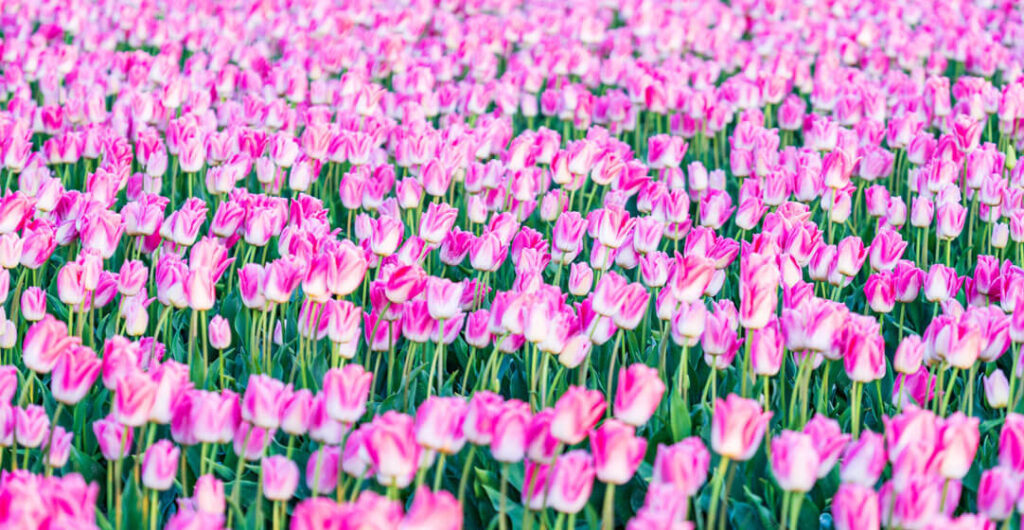
Explore new angles
Finding a great shot of the tulips is challenging, especially on a busy day with other photographers jostling to capture that one unique photo. But it’s possible to experiment and find interesting compositions. Here are some ideas to get started:
- Try shooting upwards — placing the camera on the ground and shooting up to the tulip petals. This will often yield a solid white or blue background that contrasts with tulip colors.
- Find a way to use the strong diagonals of the rows of tulips. If there’s a breeze and you have a tripod, try using a slow shutter speed to capture movement as the tulips sway back and forth.
- Try your hand at street photography mode and take photos of your friends and family taking photos. And, if people grant their permission, ask to take photos of the farmworkers and other vendors. Offer to send them a copy if you get a great shot.
- Wear pants that you don’t mind getting muddy. To get low angle shots, you’ll need to do a lot of kneeling.
- Don’t forget your tripod.
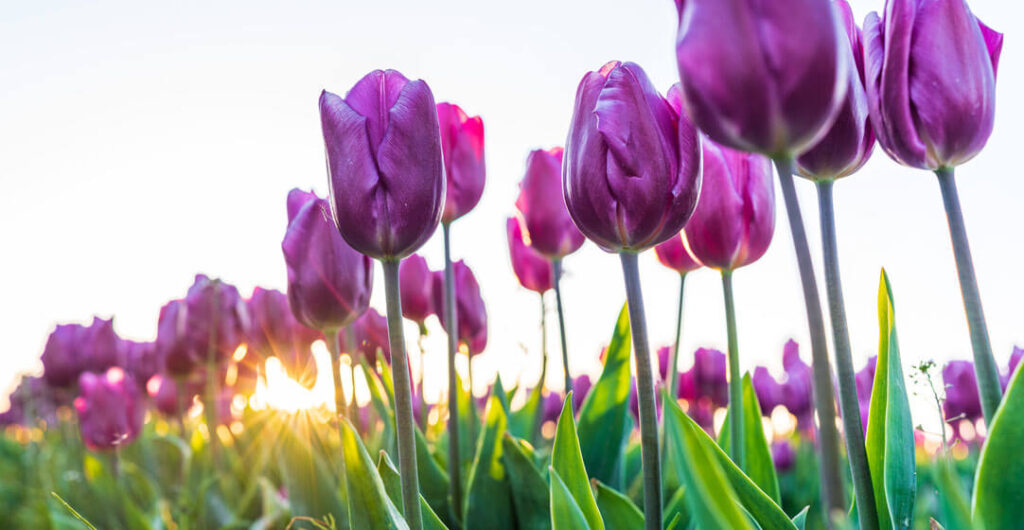
Camera tips
When it comes to photographing tulips, the choice of camera and lens depends on many factors. “A zoom lens offers the most flexibility, either on a camera or a smartphone,” explains Badgley. “I shoot a lot with a 35mm prime lens that gives me a shallow depth of field to achieve out-of-focus, blurry backgrounds — this helps the eye concentrate on what is in focus. And for those busy days, a longer zoom lens will help crop out distracting elements like cars or other people who aren’t in your group.”

Viewpoints, parks and hikes
After you’ve photographed the tulips to your heart’s content, why not explore nearby viewpoints, parks and hikes? Here are some suggestions to explore.
- Mount Erie offers amazing views south to Whidbey Island, down to Mount Ranier and west to the Olympic Mountains.
- Deception Pass Bridge is always worth the stop. Walk on the bridge’s pedestrian path and take photos on either side.
- Hike to the top of Little Mountain and soak up the view. At the top of this city park, you can find great views east to Island County, as well as a skybridge that opens up views of Mount Vernon, Burlington and across the Skagit Valley.
- Hike to Craft Island on the edge of Skagit Bay, but only when the tide is low.
- Wiley Slough, near Conway and Snow Goose Produce, offers pleasant walks and the chance to see birds such as blue herons and hawks.
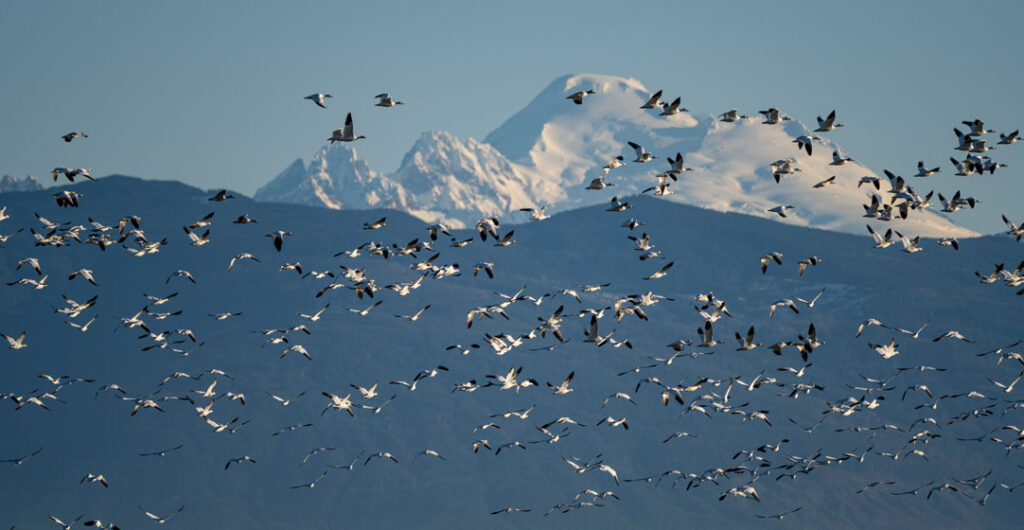
Pre- and post-tulip season
In the Pacific Northwest, the bold colors and vibrant shades of the Skagit Valley tulip fields are at their peak in April. But why stop at tulip photos? Make a day of it and explore beyond the fields.
The Skagit Valley and the surrounding area are worth a visit almost any time of year. Daffodils bloom before the tulips and there are a number of free, glorious gardens that draw flower photographers year-round, including the Skagit County WSU Extension Master Gardener Discovery Garden.
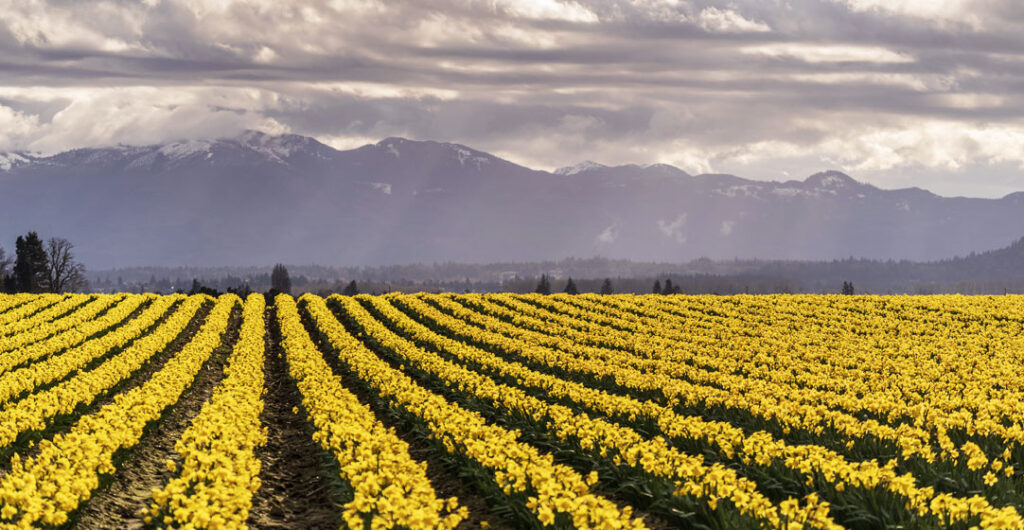
When flowers aren’t in bloom, there is always an abundance of birds to photograph. From raptors (eagles and hawks) to migrating waterfowl, birds enhance any landscape shot. In the fall and winter, there are large flocks of geese that, when feeding, look like fields of white.
Whether you have a full weekend or just a few hours to explore, there are an abundance of gorgeous blooms and views to capture and enjoy across the Skagit Valley.
—Written by Suzanne Lee
—Top photo: Marcus Badgley

Road Trip Tips
Before you go: Get ready for your road trip with a AAA Membership. Get peace-of-mind on the road plus travel and insurance services and much more.
Save on hotels and rental cars: Unlock savings on hotels with a AAA membership. Plus, AAA members save up to 20% with Hertz.
Save on car insurance: AAA members save up to 8% on car insurance.
Get battery service: AAA Mobile Battery Service uses state-of-the-art technology to accurately diagnose battery-related problems. We’ll even replace your battery with a brand-new one if necessary, at a special member price.
Save with AAA member discounts: AAA membership gives you access to exclusive entertainment discounts nationwide.









